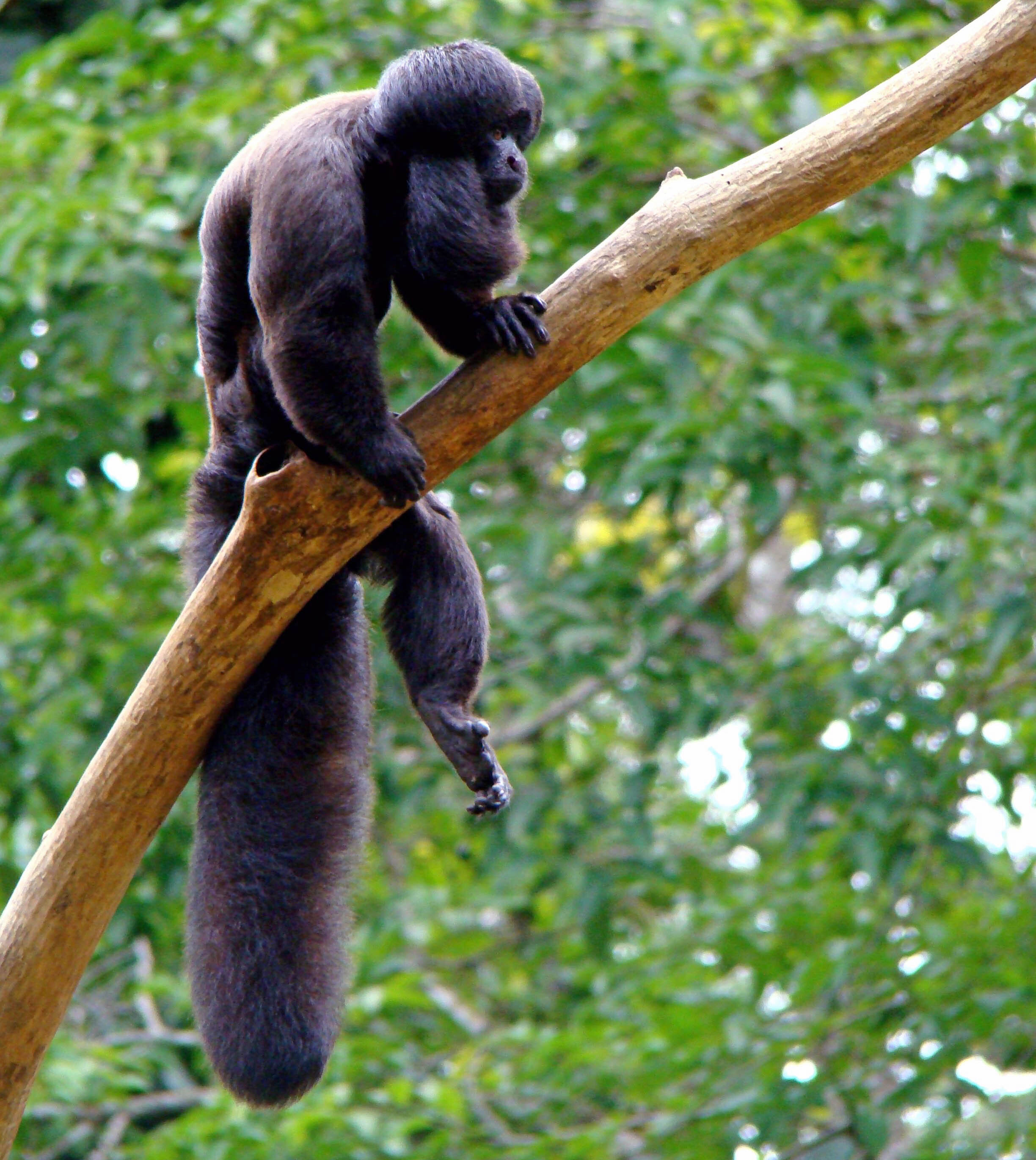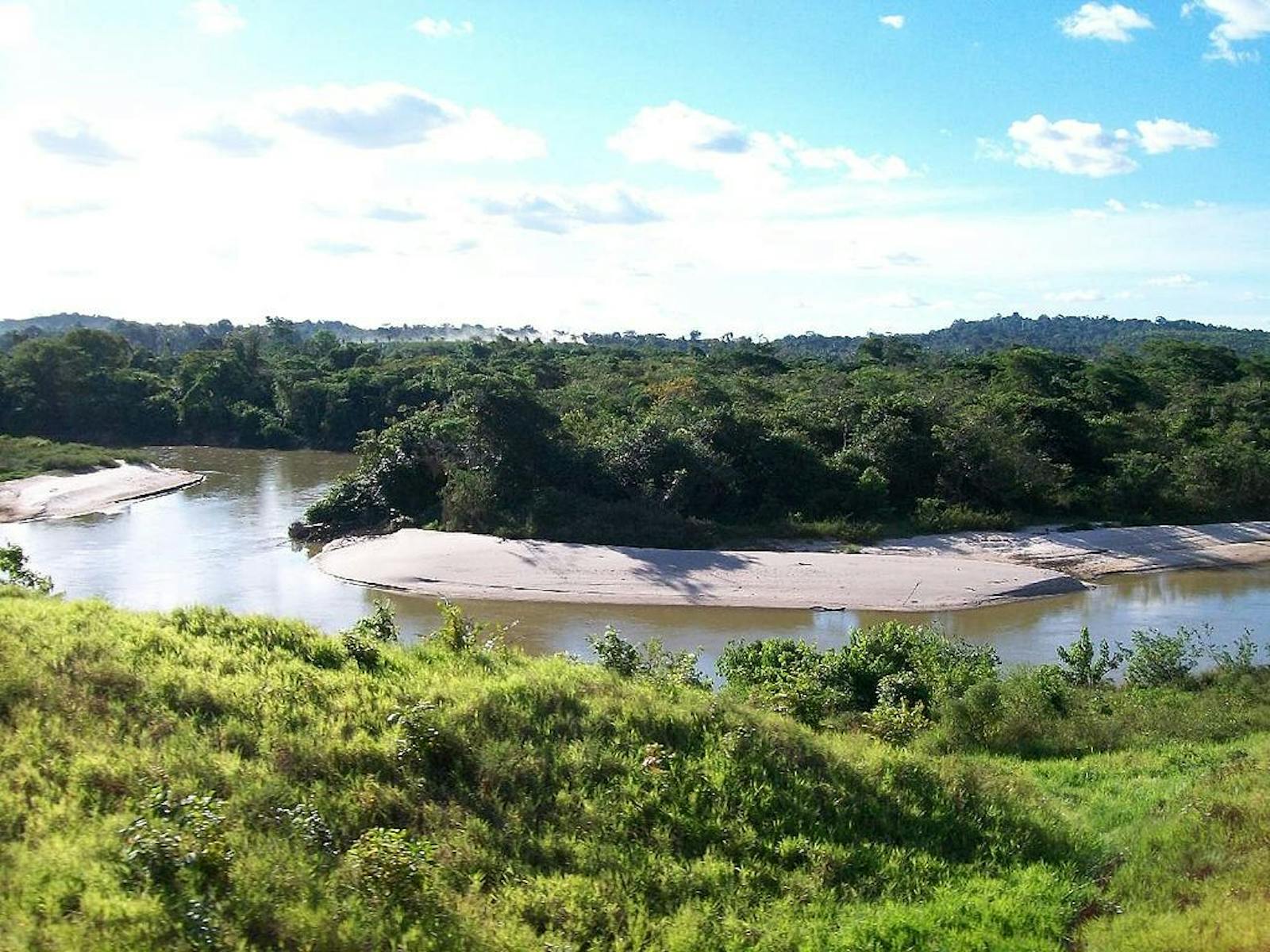Maranhão Babaçu Forests
The ecoregion’s land area is provided in units of 1,000 hectares. The protection goal is the Global Safety Net (GSN1) area for the given ecoregion. The protection level indicates the percentage of the GSN goal that is currently protected on a scale of 0-10. N/A means data is not available at this time.
Bioregion: Brazilian Atlantic Dry Forests (NT15)
Realm: Southern America
Ecoregion Size (1000 ha):
14,258
Ecoregion ID:
540
Protection Goal:
46%
Protection Level:
3
States: Brazil
The critically endangered black bearded saki is endemic to a small region of the far eastern Amazon rainforests in Brazil, primarily in the Maranhão Babaçu Forests ecoregion. The black bearded saki is known for using its hands for scooping up drinking water, a method that is believed to help with pruning their large beards. At certain times of the year 90% of this primate species’ diet consists of immature seeds.
The black bearded saki has reportedly coped with fragmentation of its habitat by consuming more flowers and non-reproductive plant parts, ingeniously allowing the plants to recover and not depleting their scarce resources. Unfortunately, their population is still decreasing and more intensive conservation actions are needed.

The flagship species of the Maranhão Babaçu Forests ecoregion is the black bearded saki. Image credit: Creative Commons
The Maranhão Babaçu Forests are located in eastern Brazil at the very eastern and southern flank of the Amazon Basin. This region comprises a transition zone between the moist evergreen forests of the Amazon Basin and the drier woodlands and scrub savannas of Brazil’s central plateau. The terrain is flat to gently rolling and is dissected by many rivers that drain into the Atlantic Ocean. Elevations inland reach 150 m and drop toward the coast. Annual rainfall ranges from 1,000–1,500 mm, mostly falling during a 6-month period every year; then the region goes through 5–6 months of drought. Annual temperature ranges from 25°–28°C. The bottomland soils are rich from river deposits of different materials.
The most striking features of the region are the extensive high-density stands of the economically important oil palm babassu. While the palm is native to the ecoregion, human activities in primary forests including burning and deforestation, from which this species is adapted to recover quickly, have assisted its spread to become the predominant vegetation. Abundant trees of primary forest include yellow mombin, membrillo, suradan, and Protium heptaphyllum (used for incense).
This ecoregion originally supported a collection of rare endemic birds, fishes, and insects. Habitat degradation of the area has caused reduced the biodiversity. There are still 112 mammals recorded such as the lowland paca, agouti, Brazilian porcupine, spiny rats, and hog-nosed skunks. Around 268 bird species have been recorded as well.
About half of this ecoregion is covered by secondary forest and degraded pasture. No large protected areas exist here. Severe deforestation during the past 70 years has eliminated most of the original moist forest, and only remnant patches remain. The babassu palm continues to proliferate on deforested sites, which are in great supply as human activities such as agriculture and ranching require cleared land.
The remnants of natural savanna and forest vegetation are threatened by strong demand for land for large-scale intensive production operations, such as cattle-ranching and sugar cane plantation. Introduced grasses for pasture such as Hyparrhenia rufa compete with native savanna species. All these factors increase the stress on the original moist forest habitat and lead to further fragmentation of the ecosystem.
The priority conservation actions for the next decade are to: 1) introduce more natural resource based, sustainable cattle ranching and agriculture practices; 2) promote restoration of degraded areas; and 3) create protected areas within the remaining fragments of moist forests.
Citations
1. Sears, R. 2018. Eastern and Southern flank of the Amazon basin in Brazil. https://www.worldwildlife.org/ecoregions/nt0139 Accessed November 17, 2018.
2. Anderson, A. B., P. H. May, and M. J. Balick. 1991. The Subsidy from Nature: Palm forests, peasantry, and development on an Amazon frontier. Columbia University Press, New York.
3. Anderson, A. B. 1983. People and the Palm Forest: Biology and utilization of babassu palms in Maranhão, Brazil. Forest Service, U.S. Department of Agriculture, Washington, DC.
4. Veiga, L.M., Silva Jr., J.S., Ferrari, S.F. & Rylands, A.B. 2008. Chiropotes satanas. The IUCN Red List of Threatened Species 2008: e.T39956A10297662. http://dx.doi.org/10.2305/IUCN.UK.2008.RLTS.T39956A10297662.en. Accessed November 17, 2018.


